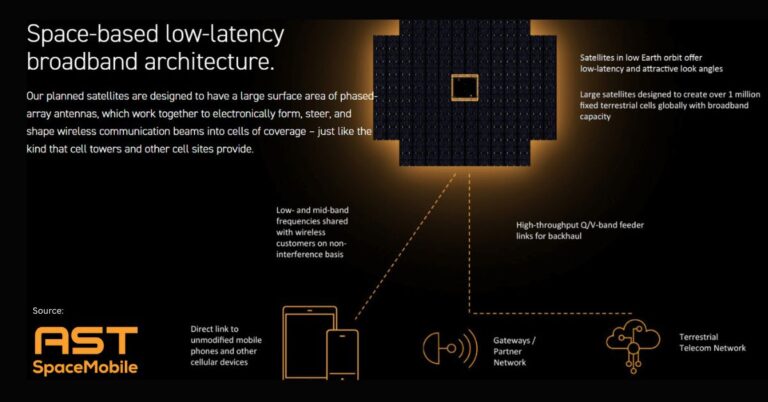KDDI launches Starlink direct-to-smartphone for iPhone, expanding NTN coverage in Japan
KDDI’s move to enable satellite data on recent iPhones via “au Starlink Direct” is a meaningful step toward resilient, nationwide connectivity that blends terrestrial and non-terrestrial networks.
Service rollout and supported iPhone models
KDDI now supports satellite data communication on all models of iPhone 13 through iPhone 17, plus iPhone Air—21 models in total—so consumers and field teams can use essential apps when they are outside cellular coverage. The service launched in August 2025 as a direct-to-smartphone offering and is expanding device support to reach a much larger installed base. Early app support focuses on high-utility, low-bandwidth use cases: Apple apps like Messages, Maps, Weather, Compass, and Fitness+, plus third-party titles including X for real-time updates, NERV Disaster Prevention for alerts, and outdoor tools such as YAMAP and Yamareco. KDDI says it will broaden the catalog through a new developer enablement program. The satellite layer augments KDDI’s 5G/4G LTE footprint; combined, the operator aims to cover virtually all of Japan’s geography, not just its population centers. Notably, the service is available to au subscribers and customers of other carriers, expanding its addressable market.
Why iPhone support makes satellite data mainstream
Japan’s rugged terrain leaves a sizable gap between population coverage and landmass coverage, and climate-related events are testing network resilience with rising frequency. Direct-to-device satellite connectivity offers a pragmatic way to reach the remaining “white spots” without the cost and timelines of new towers. For KDDI, iPhone support moves the service from niche to mainstream and differentiates its brand on reliability and safety. For Apple users, this goes beyond emergency SOS: it brings data for selected apps when there is no terrestrial signal, improving utility for hikers, mariners, remote workers, and disaster response.
How Starlink Direct to Cell works on iPhone: first-phase expectations
The service uses low Earth orbit satellites to act as space-based cell sites that connect unmodified smartphones using cellular protocols, with practical constraints typical of first-generation direct-to-device systems.
Direct-to-Cell integration with mobile core and app enablement
“Au Starlink Direct” connects iPhones directly to Starlink’s Direct to Cell satellites, which appear to devices as part of the mobile network rather than requiring a separate satellite handset. Sessions are authenticated through the mobile core so operators maintain policy control, charging, and security. KDDI is pacing app enablement to those that tolerate variable throughput and intermittent sessions, and it has launched a developer portal to help app makers optimize for this environment. Core capabilities extend beyond simple messaging to include location sharing, disaster alerts, and selected data services for approved apps.
Expected speeds, latency, and app whitelisting constraints
Early-stage direct-to-device services prioritize reach and reliability over speed. Users should expect modest data rates, elevated latency versus terrestrial 5G/4G, and the need for a clear view of the sky. Sessions may feel intermittent as satellites pass and resources are scheduled across beams. Battery consumption can increase when radios seek or maintain satellite links. The current approach whitelists compatible apps to protect capacity and user experience; KDDI plans to expand this list as capacity scales and software matures.
Impact on operators, device ecosystems, and enterprise strategies
This launch signals that satellite-to-smartphone is shifting from trials to real services, with clear impacts on coverage strategy, device roadmaps, and enterprise continuity planning.
Coverage strategy, policy control, and commercial models for operators
Direct-to-device augments rural and remote coverage without the full capex of terrestrial buildouts, and it can offload public safety and low-bandwidth traffic during disasters. Commercially, it introduces new bundles and roaming-style models where satellite acts as a premium extension to national plans. Operationally, OSS/BSS must handle satellite session records, policy enforcement, and app-layer prioritization. Spectrum governance and interference management remain critical, as do clear customer communications about performance boundaries.
Design guidance for OEMs and app developers
iPhone support dramatically expands addressable users; Android enablement will be a key next milestone. Developers should design for delay tolerance, offline-first behavior, compact data exchanges, and graceful fallback between terrestrial and satellite links. Expect platform guidance and SDK patterns for caching, retry logic, and background updates. OEMs and OS vendors will need to refine UI, power management, and radio policies to minimize battery impact while preserving reachability.
Field operations and business continuity use cases
Field operations in utilities, construction, rail, maritime, forestry, logistics, and oil and gas can benefit from always-available situational awareness, messaging, and safety updates without distributing specialized satellite handsets. Business continuity teams should evaluate direct-to-device as a complement to existing radio and satellite assets, validate coverage maps in mission areas, and establish incident playbooks that include app whitelisting, device profiles via MDM, and training for sky-view best practices. Procurement should seek clarity on SLAs, prioritization for emergency communications, pricing tiers, and device compatibility by OS version.
Global D2D competition and evolving NTN standards
KDDI’s move lands amid an intensifying global race to connect standard phones over space-based networks while 3GPP advances non-terrestrial network specifications.
Direct-to-device partnerships and market momentum
Multiple models are emerging: direct-to-cell partnerships riding mobile spectrum with LEO constellations, narrowband emergency messaging integrated into smartphones, and hybrid approaches marrying terrestrial cores with satellite access. International alliances include mobile operators teaming with satellite providers to extend coverage and differentiate on resilience. Japan’s launch adds a marquee iPhone footprint to the mix and pressures rivals to accelerate timelines.
3GPP NTN updates and regulatory alignment
3GPP releases are steadily enhancing non-terrestrial support across 5G Advanced, informing mobility management, power control, and waveform adaptations for high Doppler and long delay. Regulators are refining rules for space-to-ground use of licensed spectrum and emergency service compliance. Operators will need to align roaming, numbering, lawful intercept, and emergency alerting frameworks as satellite access blends into mainstream mobile service.
What to watch next: adoption signals and roadmaps
Execution details over the next 12 months will determine how quickly satellite data becomes an everyday safety net for consumers and a dependable tool for enterprises.
KPIs, pricing, and device roadmap milestones
Track the breadth of supported apps, performance metrics in fringe and deep-rural areas, session continuity during mobility, and the cadence of device additions beyond iPhone. Pricing and packaging will shape adoption—especially how satellite access is bundled for families, business fleets, and public safety users. Watch for Android timelines, expanded geographic footprints, and integration with enterprise mobility management and network slicing policies.
Action plan: pilots, MDM policies, and procurement guardrails
Pilot with a representative field cohort, validate coverage in operational zones, and instrument apps for small, infrequent payloads. Update MDM profiles to manage satellite behaviors, offline caches, and security controls. Engage KDDI’s developer resources to ensure app compatibility and to prioritize features like incident check-ins and breadcrumb location. Establish procurement guardrails around SLAs, data caps, and escalation paths during emergencies, and consider dual-SIM strategies to blend terrestrial redundancy with the new satellite layer.









































